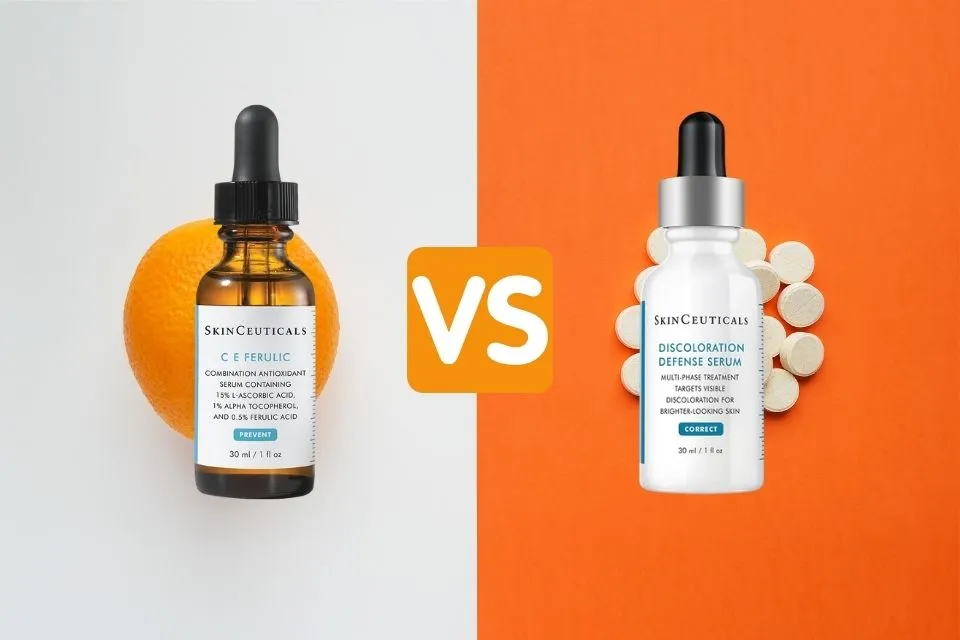It can be overwhelming to decide between vitamin C and niacinamide if you’re new to skincare. Both are research-backed, and derms love them for delivering bright, healthy-looking complexions.
Do you actually need them both? What order should you apply them in? Most importantly—what works best for your skin type?
This guide breaks down the benefits, differences, and how to layer them together without irritation. If you’re curious how to pick or combine them, keep reading.

What Is Niacinamide & Its Benefits
Niacinamide (Vitamin B3) is a water-soluble vitamin known for being gentle and versatile. Suitable for nearly all skin types, it offers a long list of benefits:
Key Benefits:
- Minimises Enlarged Pores
Refines skin texture and regulates sebum. - Fades Dark Spots & Acne Marks
Brightens uneven tone and minimizes post-acne discolouration. - Strengthens the Skin Barrier
Increases ceramide production to seal in moisture. - Reduces Inflammation
Soothes redness and calms irritation. - Anti-Ageing
Smooths fine lines and helps to produce firmer skin.
What Is Vitamin C & Its Benefits
Vitamin C is a powerful antioxidant that protects skin from free radicals induced by UV light and pollution. It’s famously known for brightening the complexion and minimizing the appearance of ageing.
Key Benefits:
- Brightens Dull Skin
Soothes away hyperpigmentation for a healthy-looking complexion. - Boosts Collagen Production
Minimises fine lines and wrinkles. - Neutralises Free Radicals
Protects skin from environmental damage. - Improves Skin Tone
Gradually evens out discolouration. - Supports SPF
Enhances sunscreen protection.
Niacinamide Vs. Vitamin C: A Comparison

Here’s a quick look at how these two powerhouse ingredients differ:
1. Primary Benefits
- Niacinamide: Reduces inflammation, balances oil, strengthens barrier.
- Vitamin C: Brightens skin, boosts collagen, fights free radicals.
2. Best For
- Niacinamide: Oily, acne-prone, or sensitive skin needing calming.
- Vitamin C: Dullness, pigmentation, and early ageing.
3. Improvement in Skin Tone
- Niacinamide: Lightens dark spots, develops even tone.
- Vitamin C: Evens out complexion as a whole.
4. Skin Types
- Niacinamide: All skin types (sensitive, too).
- Vitamin C: Normal to oily skin (irritates very sensitive skin).
5. Texture & Form
- Niacinamide: Lightweight gels or aqueous-based serums.
- Vitamin C: Watery or serum texture.
6. Gentleness
- Niacinamide: Extremely gentle and well tolerated.
- Vitamin C: Irritating at high concentrations.
7. Compatibility With Other Actives
- Niacinamide: Accommodates most ingredients.
- Vitamin C: Use with caution with harsh exfoliants or retinol.
Layering The Two Ingredients
You’ve probably heard the urban legend that you can never use niacinamide and vitamin C at the same time. The truth is, they can get along swimmingly as a duo—if you layer them correctly.
How to Layer Niacinamide & Vitamin C
- Cleanse: Begin with a light cleanser.
- Use Vitamin C: Apply your vitamin C serum first (particularly in the a.m.), as it is a lower-pH product.
- Wait: Let 1–2 minutes pass for absorption and pH equilibrium.
- Apply Niacinamide: Apply your niacinamide serum next.
- Seal & Protect: Seal with moisturizer and sunscreen (daytime).
Pro Tip:
If you have sensitive skin, apply vitamin C in the morning and niacinamide at night to prevent irritation.
Final Thoughts
Both vitamin C and niacinamide are amazing skincare ingredients with great individual strengths. For pigmentation, dullness, and aging, vitamin C is your go-to. For redness, enlarged pores, and sensitivity, niacinamide is often the better choice. Or, combine them for the best of both worlds—just introduce them gradually and pay attention to your skin’s response. With a bit of trial and patience, you’ll discover the ideal routine for your skin goals.
Also Read : Turmeric one issue to fix Acne and Scars: Simple Natural Face Masks That Actually Work



